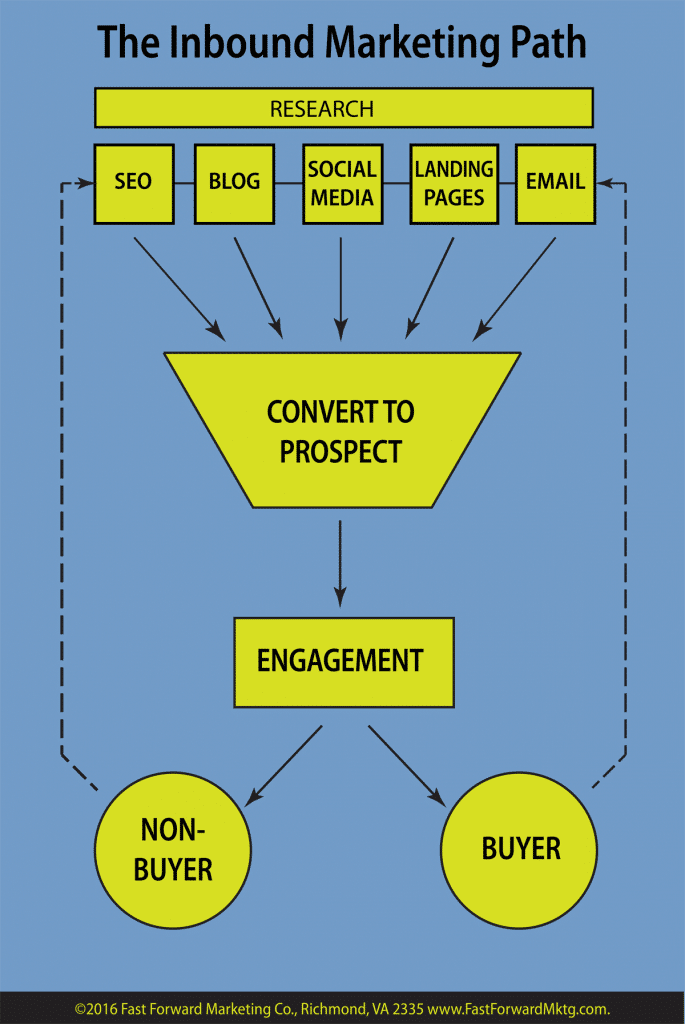Working from a prospect list your boss hands you or, worse, a purchased list of leads will get you lots of hang-ups, a few tepid maybes and very few real prospects that turn into even fewer closed deals. And why should they talk to you? They have no idea who you are, they have no idea why they might need to talk to you and, frankly, they’re busy and you interrupted what they were doing when you called.
Attract them rather than chase them Windows 10 Home Key kaufen
With a carefully thought-out plan to share information on blogs, special offerings like ebooks, whitepapers and checklists – information that is useful and attractive to your best customers and prospects that look like them – inbound marketing is a great way to attract the kind of prospect who is already interested in what you offer.
Inbound marketing is a process, starting with research, through content creation and moving through the stages of attracting and nurturing leads, and finally to converting leads to customers.

Research will give you information – or additional information – about your target market. Even if you are simply looking to expand within a silo you’re already working, research can reveal specific words and phrases, questions and concepts that are the daily language of your target and which you can use to capture their attention.
Research will also help you craft your web and blog text to improve your organic SEO. It should be a constant throughout the process and at every step.
SEO (search engine optimization) comes from your content, which is the knowledge you share via blog posts, videos, case studies, tip sheets, and other special offerings we mentioned above. Your web copy will contain some of the words and phrases you discovered in your research. Elements of your website, such as new content, tags, metadata, links and other details, also improve your organic SEO.
Blogging attracts people who are searching for your expertise. If your content is robust and, most importantly, provides useful information that speaks to their concerns, people will subscribe to your blog. Answer the questions and concerns using the language your research discovered. Do not sell. Do not talk about what you do. Talk about what you know.
Once they sign up – boom! – they’ve just identified themselves as a prospect.
Social Media invites prospects to your website. Social media is a conversation and, like any good conversation, it isn’t all about you. Engage with other thought leaders, clients and prospects to share information. An invitation to follow, like or connect encourages an interested person to become a qualified prospect.
Social media is also the broadcast channel to let people know about all the good stuff you have on your website and in your blogs and how to find it. Talking about others’ ideas is only good social media manners.
Landing pages are the locked gates to your in-depth info, and a key to your inbound success. The info you are giving away has a small price: the recipient’s name and email address. Different kinds of content will appeal to prospects and customers at different points of their purchasing journey.
When they are simply researching their options, a guide, a comparison chart or something similar would be useful to them. A case study is likely to be read when they are in the deciding stage of their journey.
Email, when it is permission based, is the tool for staying in touch with useful information and links to more in-depth info, special offers, links to blogs, invitations, news and more. When the message is properly targeted, it will have a 62 percent better chance of being clicked on than a non-targeted email. It’s the research you started with that will help you target your message.
Don’t bother with purchasing an email list. At best, a large percentage of the list will be out of date or your carefully crafted message will end up in their spam folder. At worst, you’ll be shut down for sending spam and your email account will be suspended or cancelled.
Don’t you hate getting junk emails from someone you don’t know for a product you don’t want or need? Of course you do. So, why send it?
Getting to know you
What’s the point of all this activity if none of it results in a direct sale? You’re cultivating a relationship and sharing knowledge. You’re demonstrating your expertise. You’re building a relationship. You’re building trust.
You’re making it easy for your sales team to close the deal. According to a survey conducted by Hubspot, in six months, inbound marketing resulted in almost twice as many web visitors and 2.69 times more leads. The conversion rate for lead to sales was a whopping 73 percent higher compared to all respondents, and 69 percent of survey respondents saw increased sales revenues. Isn’t that a worthwhile goal?
